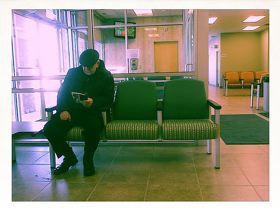As a healthcare consultant, it is not unusual to be asked about HIPAA regulations on a weekly basis. Three questions come up regularly and seem to cause the most confusion when discussing HIPAA. I call them the Three Big HIPAA Myths – you can’t place medical charts on exam room doors, you can’t use sign-in sheets, and you can’t leave messages on patients’ voice mail or answering machines.
Here, then are the answers, straight from the Office for Civil Rights, which enforces:
- the HIPAA Privacy Rule, which protects the privacy of individually identifiable health information;
- the HIPAA Security Rule, which sets national standards for the security of electronic protected health information;
- the HIPAA Breach Notification Rule, which requires covered entities and business associates to provide notification following a breach of unsecured protected health information;
- and the confidentiality provisions of the Patient Safety Rule, which protect identifiable information being used to analyze patient safety events and improve patient safety.
#1 Question: A clinic customarily places patient charts in the plastic box outside an exam room. It does not want the record left unattended with the patient, and physicians want the record close by for fast review right before they walk into the exam room. Does the HIPAA Privacy Rule allow the clinic to continue this practice?
Answer: Yes, the Privacy Rule permits this practice as long as the clinic takes reasonable and appropriate measures to protect the patient’s privacy. The physician or other health care professionals use the patient charts for treatment purposes. Incidental disclosures to others that might occur as a result of the charts being left in the box are permitted, if the minimum necessary and reasonable safeguards requirements are met.
Examples of measures that could be reasonable and appropriate to safeguard the patient chart in such a situation would be limiting access to certain areas, ensuring that the area is supervised, escorting non-employees in the area, or placing the patient chart in the box with the front cover facing the wall rather than having protected health information about the patient visible to anyone who walks by. Each covered entity must evaluate what measures are reasonable and appropriate in its environment.
#2 Question: May physician offices use patient sign-in sheets or call out the names of their patients in their waiting rooms?
Answer: Yes. Covered entities, such as physician’s offices, may use patient sign-in sheets or call out patient names in waiting rooms, so long as the information disclosed is appropriately limited. The HIPAA Privacy Rule explicitly permits the incidental disclosures that may result from this practice, for example, when other patients in a waiting room hear the identity of the person whose name is called, or see other patient names on a sign-in sheet. However, these incidental disclosures are permitted only when the covered entity has implemented reasonable safeguards and the minimum necessary standard, where appropriate. For example, the sign-in sheet may not display medical information that is not necessary for the purpose of signing in (e.g., the medical problem for which the patient is seeing the physician).
#3 Question: May physician’s offices or pharmacists leave messages for patients at their homes, either on an answering machine or with a family member, to remind them of appointments or to inform them that a prescription is ready? May providers continue to mail appointment or prescription refill reminders to patients’ homes?
Answer: Yes. The HIPAA Privacy Rule permits health care providers to communicate with patients regarding their health care. This includes communicating with patients at their homes, whether through the mail or by phone or in some other manner. In addition, the Rule does not prohibit covered entities from leaving messages for patients on their answering machines. However, to reasonably safeguard the individual’s privacy, covered entities should take care to limit the amount of information disclosed on the answering machine. For example, a covered entity might want to consider leaving only its name and number and other information necessary to confirm an appointment, or ask the individual to call back.
A covered entity also may leave a message with a family member or other person who answers the phone when the patient is not home. The Privacy Rule permits covered entities to disclose limited information to family members, friends, or other persons regarding an individual’s care, even when the individual is not present. However, covered entities should use professional judgment to assure that such disclosures are in the best interest of the individual and limit the information disclosed.
In situations where a patient has requested that the covered entity communicate with him in a confidential manner, such as by alternative means or at an alternative location, the covered entity must accommodate that request, if reasonable. For example, the Department considers a request to receive mailings from the covered entity in a closed envelope rather than by postcard to be a reasonable request that should be accommodated. Similarly, a request to receive mail from the covered entity at a post office box rather than at home, or to receive calls at the office rather than at home are also considered to be reasonable requests, absent extenuating circumstances.
Photo Credit: Sharon Drummond via Compfight cc


